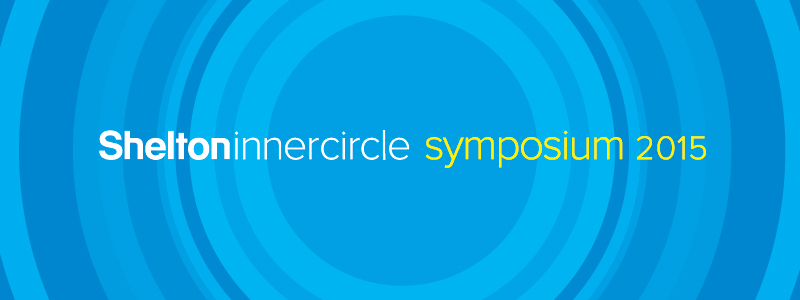Over the last two days, Shelton Group has been hosting our annual Inner Circle Symposium. This is an intimate event of clients from a variety of industries (one per sector, so no competitors allowed), all trying to leverage an energy efficiency or sustainability story.
The aim of the symposium is to dig deeper into some insights from our ongoing Pulse studies, explore trends we see in the market and learn from each other. One of the standouts in this year’s symposium was a panel discussion we held with facilities managers and purchasing folks from several key industries – hospitality, health care, manufacturing and professional/office.
We brought them in because of two consistent findings in B2B Pulse:
- When you ask business decision makers what energy and environmental goals their companies have, you get the list you would expect; when you ask them what’s most important as they make buying decisions, you get a different list. So their personal preferences/attitudes matter a lot.
- Facilities managers and procurement officers are often decision makers (and certainly decision influencers), but, generally, they score low on engagement in energy and environmental issues. In other words, energy efficiency and environmental value propositions don’t really resonate with them … but we represent clients who very much want their energy efficiency or environmental value propositions to be part of what differentiates their companies and brands and wins them business.
The goal of the panel was to find out how to do that. We learned many things, but here are my top four takeaways:
- Be transparent. This is actually a trend/demand that’s getting stronger across all sectors between buyers and sellers. (There’s an entire organization devoted to it called Transparency International, and Microsoft has recently launched a Transparency Hub so we can all see how they’re “meeting their citizenship requirements.”) It played out in our panel, with the advice being that if you have an issue – environmental, chemical, supply chain, social – you should bring it up and bring it up early in the selling process. A story was told of a supplier who lost business because they didn’t expose an ingredient issue until late in the game, while their competitors all had the same issue and had all raised it early.
- They truly might pay more, but you have to hang in and educate them about the long-term benefits. If you have a product to sell that offers both a sustainability and a cost-saving benefit – lots of water or energy will be conserved or waste will be avoided – but it costs more, don’t be deterred if the initial reaction from a purchasing agent or facilities manager is, “Whoa … you’re more expensive than the other guys.” Spend the time to help your prospect see the long-term cost savings. If your value proposition is compelling enough, and your innovation interesting enough, these time-starved folks will give you the time to walk them through the lesson.
- Help them engage employees. If there’s some way your more sustainable, efficient solution can help the company you’re selling to engage its employees, that’s a huge win. It sounded like a few of the organizations represented on the panel struggle with employee turnover – which costs money – and if your solution gives them a way to get employees excited and engaged, that’s a plus.
- If you’re a utility, take them innovative ideas. After one panelist brought it up, everyone agreed that energy costs were one of their organization’s biggest expenses, and they’re all actively working to cut them. I pointed out that there were a couple of utilities in the room and the panel had basically just stated that they were all actively trying to buy less of the product they sell. When I asked what utilities could do to keep them as customers, they said, “Bring us new ideas.” They actually said, “If you help us conserve energy, you’ll make less money from us today … but we’ll be loyal for the long term and might buy something else from you.” They’re also interested in innovations that they can leverage for marketing purposes. So, utilities, take your largest customers ESCO models and energy storage solutions, EV charging stations and solar systems. They’re interested and open.
The last two days were deep, meaty and inspiring. Thanks to the facilities managers who made our panel insightful, and thanks to our Inner Circle members and Symposium participants whose contributions to the discussion made it enlightening!


TAGS: Built Environment, Corporate Sustainability, Efficiency & Conservation, Energy & Environmental Marketing
SHARE THIS: